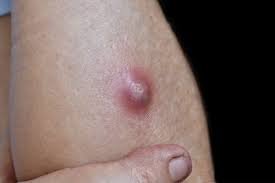Overview
Invasive staph infections are serious conditions caused by Staphylococcus aureus bacteria entering the bloodstream or deep tissues. Unlike skin infections, invasive infections can affect organs such as the lungs, heart, bones, and joints, and may become life-threatening. In Korea, increasing awareness and advancements in hospital hygiene protocols have helped reduce cases, but antibiotic-resistant strains like MRSA remain a major concern.
What is Staph Infection (Invasive)?
An invasive staph infection occurs when Staphylococcus aureus bacteria bypass the skin barrier and spread into the bloodstream, internal organs, or deep tissues. This type of infection is often hospital-acquired but can also develop in the community. It requires urgent medical attention due to its high risk of complications and rapid progression.
Symptoms
Symptoms vary depending on the area of infection but may include:
- High fever and chills
- Low blood pressure (septic shock)
- Fatigue or confusion
- Shortness of breath
- Rapid heart rate
- Pain in muscles, joints, or bones
- Abscesses or swelling in internal organs
- Red streaks or rashes on the skin (sign of sepsis)
Specific forms may include:
- Endocarditis – chest pain, heart murmur
- Osteomyelitis – bone pain, swelling
- Pneumonia – cough, difficulty breathing
Causes
- Invasive Staphylococcus aureus entering through:
- Open wounds or surgical sites
- Intravenous catheters
- Infected medical devices (pacemakers, prosthetics)
- Skin infections that spread internally
- Poor infection control in healthcare settings
- Invasive procedures like dialysis or surgery
Risk Factors
- Hospitalization, especially in ICUs
- Recent surgery or trauma
- Presence of catheters or medical implants
- Chronic illnesses (diabetes, cancer, kidney disease)
- Weakened immune system
- Use of immunosuppressive medications
- Intravenous drug use
- Advanced age or very young children
Complications
- Sepsis and septic shock
- Endocarditis (heart infection)
- Osteomyelitis (bone infection)
- Pneumonia (lung infection)
- Abscesses in organs (liver, brain, kidneys)
- Death, if not promptly treated
- MRSA infection, resistant to common antibiotics
Prevention
- Strict hygiene in medical settings
- Sterile handling of surgical tools and catheters
- Regular handwashing by patients and staff
- Early treatment of skin infections
- Monitoring chronic wounds and pressure ulcers
- MRSA screening in hospitals (common in Korea)
- Timely removal of unnecessary medical devices
Treatment Options in Korea
South Korea offers world-class treatment for invasive staph infections, with a strong emphasis on infection control, early diagnosis, and tailored antibiotic therapy.
Diagnosis:
- Blood cultures to detect bacteria in the bloodstream
- Imaging (CT, MRI) to locate internal abscesses or organ damage
- Echocardiography to check for endocarditis
- Blood tests (CBC, CRP) to assess severity
- Sensitivity testing for antibiotic resistance
Treatment:
- Intravenous (IV) antibiotics, such as:
- Nafcillin or oxacillin (if not MRSA)
- Vancomycin or linezolid (for MRSA)
- Surgical drainage or removal of infected tissue or devices
- Supportive care in ICU if septic shock develops
- Long-term antibiotic therapy for deep infections (4–6 weeks)
- Infection control monitoring during hospital stay













